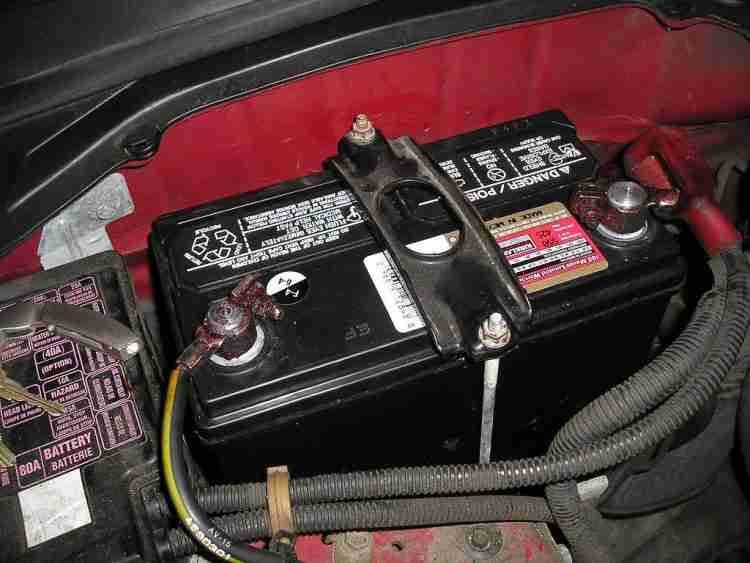How to Charge a Dead Car Battery

How to Charge a Dead Car Battery
Dead batteries are extremely frustrating to deal with. Maybe you went on vacation, and your car wouldn’t start when you came home. Or perhaps you left your lights on by mistake. Whatever the reason, it can be a tricky situation if you don’t know what to do.
But can you charge a completely flat battery? In short, yes, you can. If a battery doesn’t charge, there is something else wrong. It’s important to understand your car battery and how to react to this scenario.
Let’s look at what you need to know.
Use a Battery Charger

The easiest way to bring your battery back to life is to use a charger. These are not very expensive and retail for between $30 to $100. It’s a good long-term investment because it may save you from being stranded one day.
These chargers work with 12v batteries, which come as standard in most cars. If you have a charger, then you don’t need to worry about trying to jump-start your car. This can be problematic with modern cars because they have such advanced electronic systems.
All you need to do is hook the charger up to the battery and let it work its magic.
Charging Settings
Battery chargers may have multiple settings for 6v and 12v batteries. Select the appropriate format for your vehicle. Remember to consult the vehicle manual before charging. The car’s voltage must match the charger’s DC output voltage.
There may also be a ‘crank assist’ setting to help jump-start the battery.
Charging Rates
Depending on your situation, you may need to change the charging rate. Let’s break down the differences now.
Slow Charge Rate
Ideally, you should use this setting because it places less stress on the battery.
As the name suggests, it takes longer, but it’s worthwhile. Simply leave your vehicle to charge overnight or for up to 24 hours.
Fast Charge Rate
Only use the fast charge setting in an emergency. It is much more taxing on the battery, so it’s not advisable to use this often.
How to Use a Car Battery Charger
Follow these steps to safely use a car battery charger –
- Leave your charger unplugged and select the correct setting on the charger.
- Untangle the charger cables.
- Locate the positive and negative sides of the car battery.
- Attach the red cable to the positive side of the battery.
- Clip the black cable to the negative side.
- Connect the charger to an outlet.
- Leave the battery to charge. It may take up to 24 hours for it to reach full capacity on the slow charge setting.
- Unplug the charger from the power outlet.
- Disconnect the positive and negative connectors.
- Start the engine and try your vehicle’s headlights.
Jump-Starting Your Car

The other method to recharge your car’s battery is to jump-start it. It’s important to understand that this is much riskier than using a charger. These days cars contain advanced electronic systems for almost every operation. Everything from the power steering to the locking system depends on electronics.
Jump-starts can send a sudden surge through the vehicle and damage these electronics. This can be extremely expensive to repair. However, you may find yourself in a situation where you have no other choice. If this is the case, then you need to know what you’re doing.
Follow our guide below, and you’ll be able to jump-start your car safely.
How to Do a Jump-Start
You will need a set of jumper cables and access to another vehicle to do a jump-start. Please note that you should consult your vehicle manual before attempting this process.
- Park the live vehicle close to the dead vehicle. Then turn off both engines.
- Connect the jumper cables in the right order. The red cable attaches to the positive side of the dead battery. Then connect it to the positive side of the live battery.
- Clamp the black cable to the negative side of the live battery. Finally, clamp the other end of the black cable to a metal fitting inside the dead car. Don’t attach it to the other negative post.
- Start the engine of the live vehicle and leave it to run for a few minutes.
- Start up the dead car.
- After the engine turns over, disconnect the cables in the reverse order. It’s crucial to disconnect the black cable from the metal fitting first.
- Leave the car to run for at least 30 minutes.
- It’s advisable to drive the car for at least half an hour after this.
Health & Safety
These days it’s almost impossible to suffer electrocution from a car battery. However, you may experience a mild electric shock. You can minimize any risk by keeping the following tips in mind.
Dress Appropriately
Don’t wear jewelry or metallic accessories because they can conduct electricity. It’s also advisable to wear eye protection and gloves if possible.
Don’t Take Risks
If the battery is cracked or corroded, it may not be safe to charge. You should replace it as soon as possible.
Also, never face the battery when you attach the clamps as it may spark. When you use a charger, you should keep it as far from the vehicle as possible. Use an extension cable if you have one.
Use Quality Jumper Cables
Don’t use cheap jump leads. Higher-quality cables cost more, but they’re still a lot cheaper than repairing your car’s electronics.
Battery Life
Keep in mind that batteries aren’t designed to last forever. They should work for about four to seven years with maintenance. After this point, you should replace them.
Even careful drivers can still suffer from battery problems. If you drive an advanced car and spend a lot of time in traffic, you may deal with sulfation. When a car doesn’t reach a higher speed for the necessary length of time, the battery will drain. Protect your battery, and it will look after you. Invest in a charger and keep it in your vehicle because you don’t want to jump-start your car if you can avoid it.













No Comment